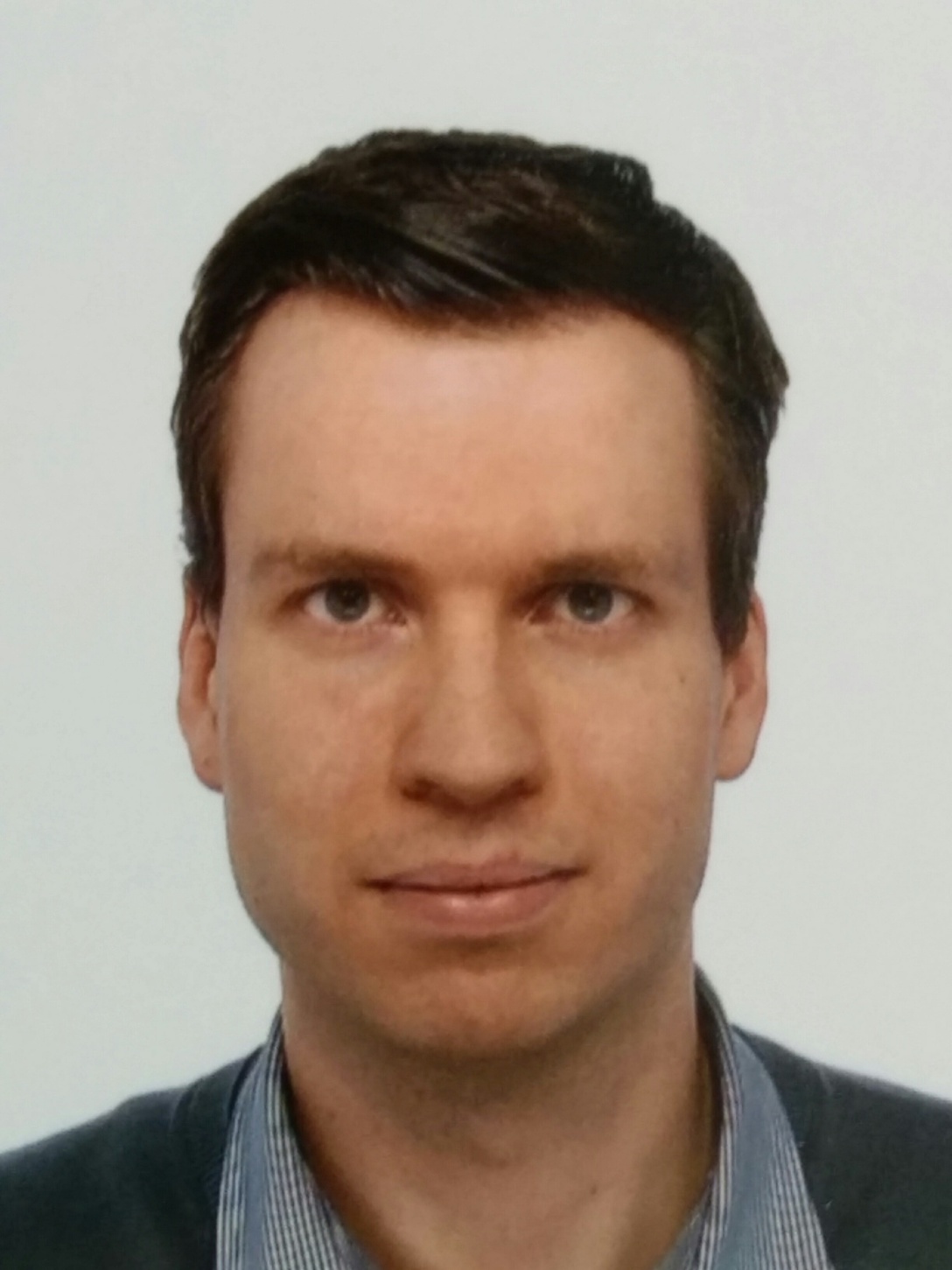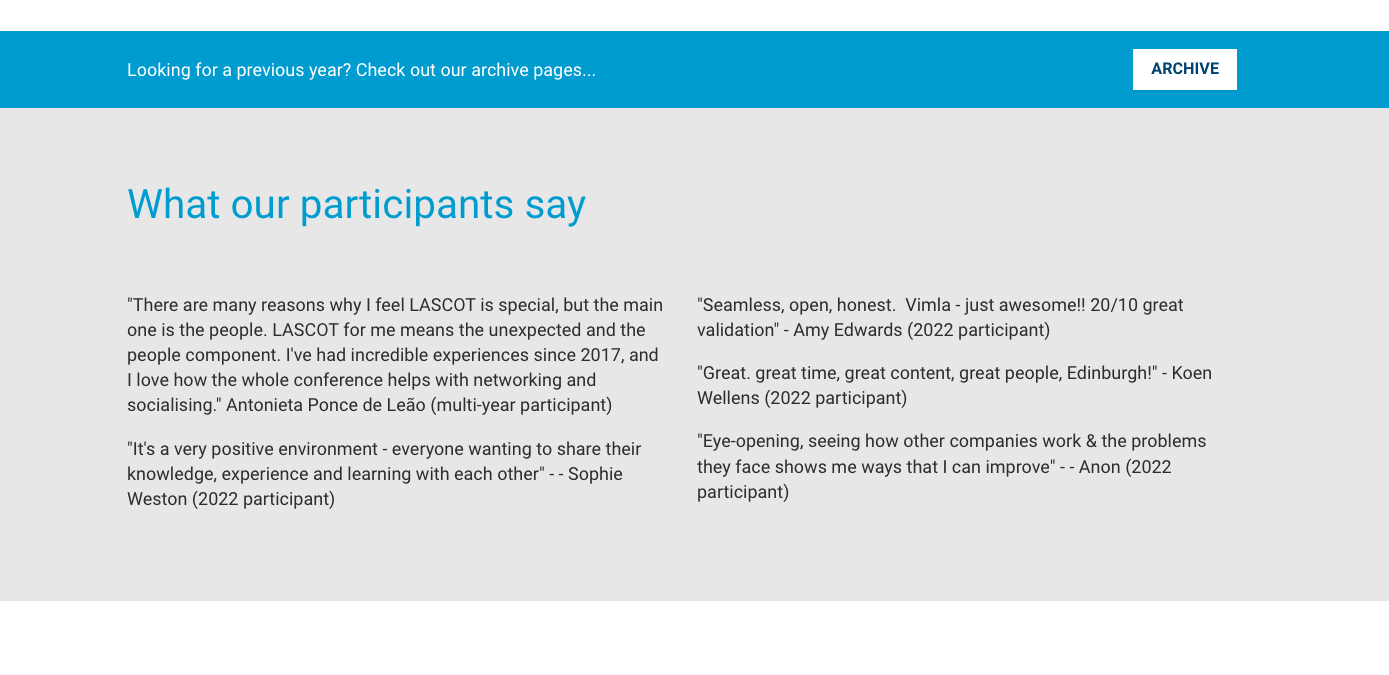Top 5 takeaways from LAS23
 Koen Wellens
Koen WellensTwo weeks ago I attended Lean Agile Scotland 2023. I’ve been attending this conference since 2017 and always come back refreshed, thinking about new ideas and exploring new ways of doing what I love most: helping individuals and teams create better software. I even made it to their website with my great feedback!
Before I start, I want to point out how well Software Acumen organized the conference. They allow participants and speakers to thrive in an open, safe, and caring community. I haven’t seen a lot of conferences that eat their own dog food at this level. It is truly outstanding.
There is a lot to learn at a conference like this one and it’s hard to pick what is important, so the list below is not extensive nor complete. It is not everything there was to learn or to see, but there are 5 picks that I think I can use immediately in my day-to-day work. Other topics might need more planning or thinking over. Chances are high I will come back to them later.
WFH and AI are here to stay
Adrian Cockcroft gave a great keynote about speeding up innovation and identifying tipping points for something expensive to become cheap. The talk explained when Netflix became a superior player in their market and identified other tipping points for other known businesses, such as Apple.
What it also touched on was how Work From Home (WFH) is here to stay. Since we have a wider variety of computers (laptops and smartphones instead of desktops) and there is broadband internet access, the first steps to a more flexible working environment were taken years ago. It is due to the COVID pandemic that the trend was greatly accelerated. It’s up to companies and organizations to deal with this and create a suitable WFH strategy rather than force employees to come back into the office.
Another subject that Adrian covered was Artificial Intelligence (AI). AI tools are competing with humans and are improving rapidly. For AI, it’s possible to digest all the documentation and examples so it can code like an expert. For us humans, digesting it all is hard to impossible. As with WFH, we should not fight this. It’s up to us to make good use of these new technologies and embrace them. Instead of writing software, maybe we should start optimizing content to be consumed by AI.
Systems thinking in 1-to-1 coaching
Jack Spencer explained to us how systems thinking is the ability to communicate about the complex environments around us. He gave an interesting case study with tips to create our own systems thinking workshop. He made some good arguments and pointed out how we should think about wholes and relationships rather than about parts.
He used his workshop for systems thinking with teams, or groups of people. As I’m currently working as a technical coach for my client, I’m doing a lot of 1-to-1 sessions and immediately wanted to try this out for 1-to-1 coaching as well.
I will share more in a future blog post, but what I can say already is that I have my Miro board set up for this. I’ll be having multiple 1-to-1 coaching sessions this week and next week in which I will create an integral model about learning, convert it into the iceberg model and see if we can improve how people are learning and what they think is influencing their learning.
Design your services and how you’ll end them
At the end of the first day, we had another keynote by Sarah Drummond about good service design. It’s not only about the user experience, but also about infrastructure, organization, intent, and culture.
Depending on your technology or the technological choices made by your company in the past, you can be limited in how your service is functioning. When different parts of the organization need to make decisions about the service, collaboration is extremely important. If not, it will be very difficult to make the right business decisions for the service. The things we want to achieve as an organization might cause us to forget what the intent of a service is. Culture, the morals and beliefs shared by the organization, are what impact the decisions taken when creating services.
We can use this stack of service design as a map to create questions and define what we can influence. We can use it to find out what is off the table by understanding these components of an organization.
If you want to read more about the topic, the best thing is to read up on Sarah’s blog: https://sarah-drummond.com/full-stack-service-design/.
The last session I followed at the conference was not about designing your services for how they are used, but for how they are killed. Anne Dhir gave us wise information about why it is useful to think about how you will end your service. How can we make sure at the end of our service, that it is really dead? We should design this from the start. The question “What will we do when there is no more need for this service?” should be answered sooner rather than later.
What are your names?
Sohini Petri gave us all a reminder of what it means to be inclusive and how we should work with humans rather than resources. I wouldn’t do right by her by summarizing the session here but allow me to share some thoughts.
When things happen, we need to take them personally. It is taking things personally that makes us human rather than machines. It is this humanity and vulnerability that helps us become more inclusive. We should always be open to other perspectives.
She gave us a great exercise called “My fullest name”. The goal is to share the origin story of your name. The idea is simple: write all your names on an index card. Then share this with someone else. Share who named you that, and why that name. What is its meaning or origin? Do you have nicknames? What is your preferred name? In doing this, you learn so much about each other in just under 10 minutes. I think it’s a perfect ice-breaker for a new team or for a team struggling with getting to know each other.
Because I really liked this talk, I want to highlight one quote from Sohini:
“The project of leadership is mostly about becoming better at connecting with our humanity and learning how to cultivate respectful, healthy human relationships… and it should be inherently inclusive.”
Keep on doodling
I was lucky enough to follow a workshop by Nicole Stephan Smith on doodling. She gave us some tips and tricks on how to draw and what to draw. Most importantly, the biggest message for me was this: it’s not about the quality of your drawing. It’s about the quality of making a visual note that is easy to understand. Quality of drawing will come from practice.
I’ve followed workshops about visual notetaking in the previous editions of LAS. I always seem to lose motivation because of the quality of my drawings. Let’s see if Nicole’s workshop has given me the energy to hold on longer (if not forever) this time.
My current goal is to make one visual note per week and write a blog post about it, or about several visual notes. As we are all always learning, it doesn’t harm to share this information.
Conclusion
The LAS conference has given me new information that I was able to digest at my own sustainable pace. I’ve picked 5 things I will use very soon, but there is so much more to say about what I’ve learned.
If you are interested in joining me, I will likely attend next year’s edition. It would be great to catch up with you there.
Subscribe to my newsletter
Read articles from Koen Wellens directly inside your inbox. Subscribe to the newsletter, and don't miss out.
Written by

Koen Wellens
Koen Wellens
I am a freelance agile software engineer from Belgium.
